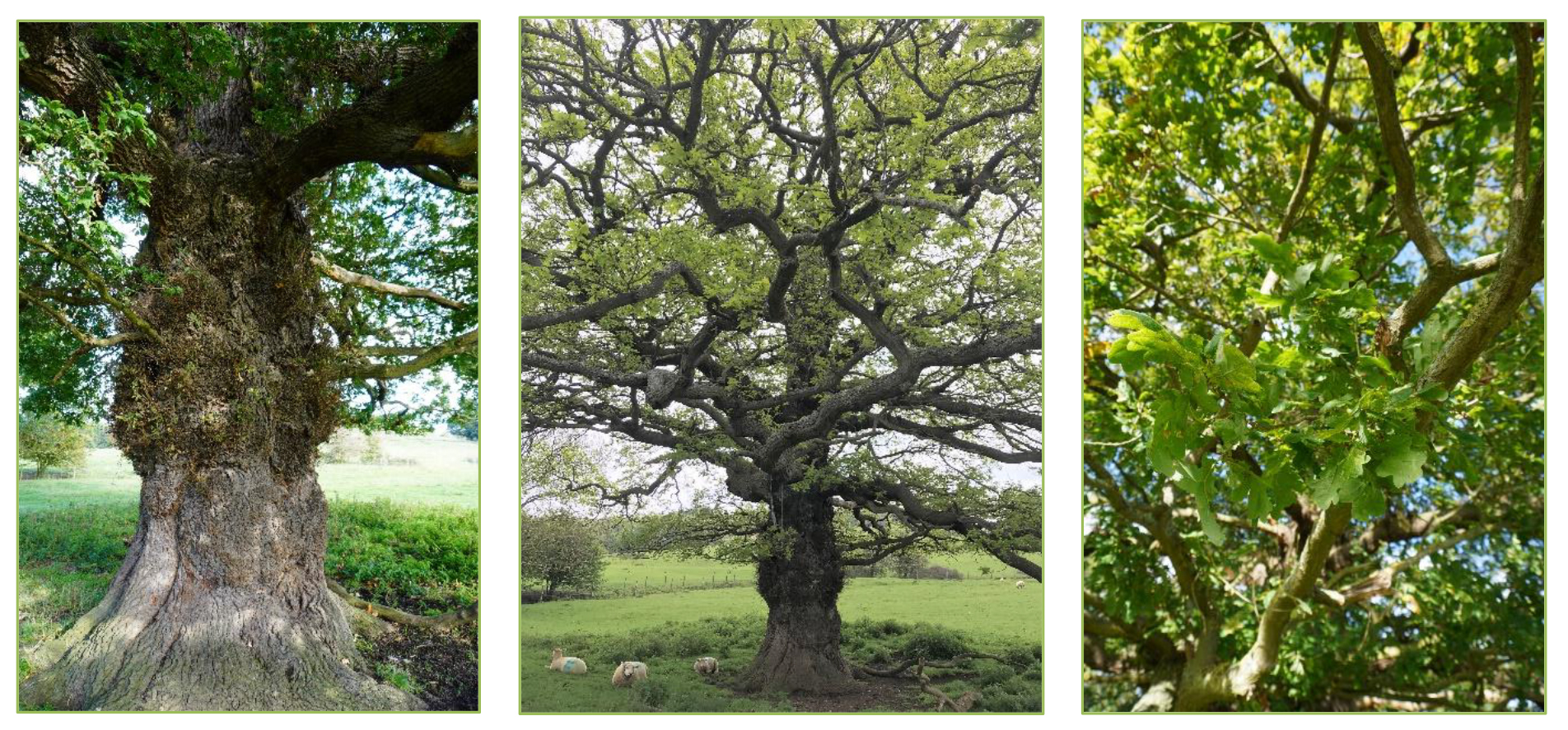The Great Oak, Everton Estate



Greensand Country Heritage Trees
The oak tree in the meadow is the largest oak growing directly on this eastern half of the Greensand Ridge Walk. It is a Pedunculate or Common oak (Quercus robur), one of our two native oak species and is recorded as a significant tree on the First Edition Ordnance Survey map (c.1890). With a trunk circumference of 5.5m our current data estimates it to be around 300 years of age and so either planted or, more likely, arising naturally in the early C18th. This tree has grown from being a mere sapling in early Georgian times, avoided being felled for timber when demand was high in the late 1700’s and being regularly cut as a pollard. Pollards were ‘working’ trees which had branches cut off at a height high enough to allow new growth to be out of reach of grazing deer and livestock.
Why was this tree left when others died or were removed? Was it for a long time recognised as an important landmark tree along what has always been a well-used route, or perhaps a meeting point? Today as you walk from Sandy it marks the beginning of the historic Hassells Hedge to the north, a boundary, perhaps originally of elm trees, to the west of The Hassells (now Hazells Hall).
Perhaps this tree was used, as is recorded elsewhere, as a gibbet, where the gamekeeper would hang vermin as evidence to show the landowner he was doing his job. This sounds gruesome but less so than those trees where trespasses were hung from to deter other trespasses and would be poachers. What we do know is that this tree has witnessed many things over the past 300 years including secret missions being flown out of the nearby Tempsford airfield during the Second World War.
This oak is of a size and age that categorises it as a “veteran” tree and is of great biological interest and has high wildlife value. Veteran trees are mature trees that are not quite in their final “ancient” phase of life but are developing features found on ancient trees. This tree will have the beginnings of a hollow trunk as heartwood decaying fungi begin to re-cycle the centre of the tree that is no longer needed. Fungi have a close relationship with trees and help roots absorb nutrients from the soil and can prolong a trees life by decomposing the dead heartwood. This tree will already taking advantage of this natural process and living off its own compost!
Some 2,300 different species have been identified as living on oak trees in the UK. Of these, 320 species have only ever been found on oak and appear to be totally reliant on veteran and ancient oak for their survival. We therefore need to look after our veteran oak trees and support landowners to help protect them.
Because compaction of soil is detrimental to a trees health we ask you to admire this tree from the public footpath and see how many insects, birds or mammals you spot that are visiting or living on this remarkable tree.
The Heritage Tree post has been installed with kind permission of the Everton Estate.



































